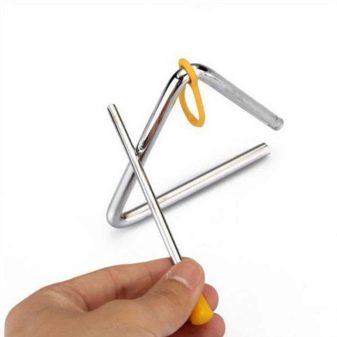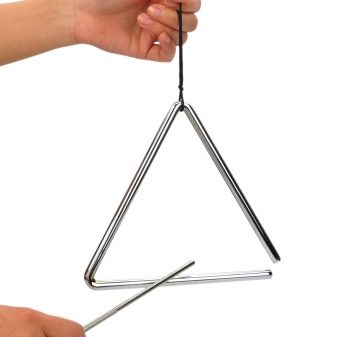Triangle - history and description of a musical instrument
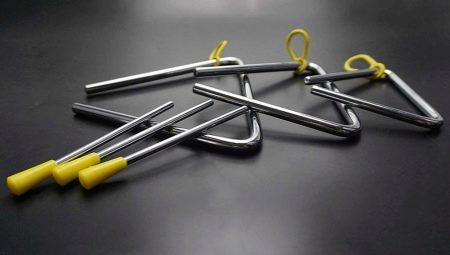
The musical triangle is a rather simple instrument in appearance, but it has its own characteristics. We will tell you about his history, sound, and also what role he plays in the orchestra below.
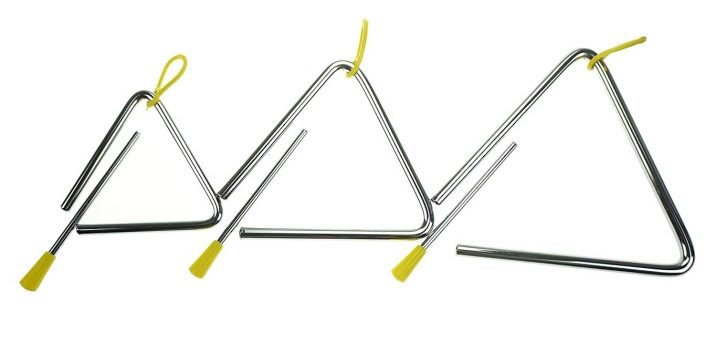
What it is?
A triangle is a musical instrument with a stick included, which is one of the most basic percussion instruments. It got its name because of its shape in the form of an equilateral triangle. The people in Russia called him nothing but "snaffle", but such an unusual name did not take root in the orchestra.
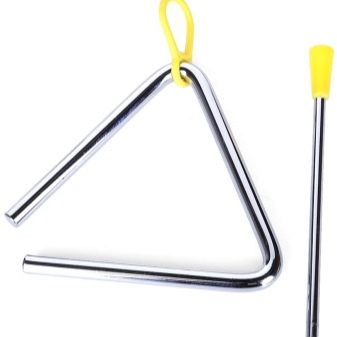
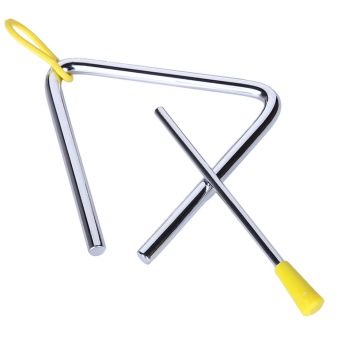
In general, this tool is a metal rod that is bent into the desired shape. At the same time, in one of the corners of this triangular tool, the ends of the metal rod do not converge, that is, it turns out that this corner remains open.
Despite the visual simplicity of the instrument, it is produced according to strict rules so as not to distort its sound. To create it, they use a special type of steel - silver. Much attention is paid to the stick of the instrument.
In no case should it have handles, it is usually made of the same material as the triangle.

Origin
Unfortunately, it is still impossible to say exactly when and where the first musical triangle appeared. At the moment, it is only known that the first models of this instrument were created in the form of a trapezoid and looked like a stirrup of the Middle Ages. This was found out thanks to the works of some English and Italian artists, who depicted this instrument in some of their works.
The first mention of such a triangle can be found only in the Württemberg property inventory, which dates back to 1389. But according to some information, most likely, this tool appeared in the eastern regions, and specifically in Turkey. The very first mention of it dates back to the fifteenth century.
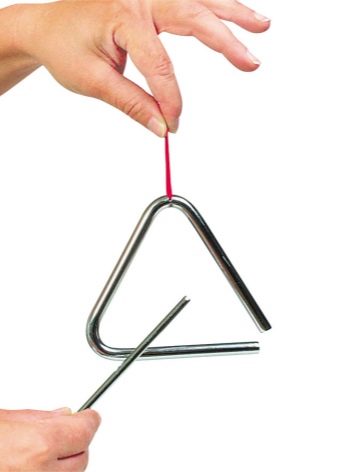
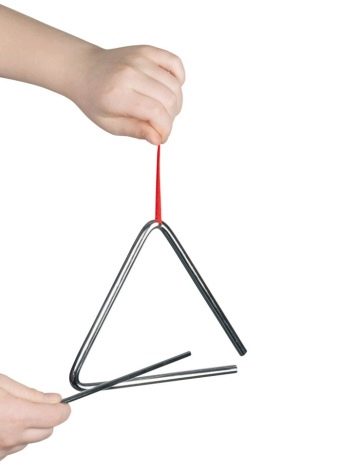
It is impossible to say for sure about the exact period in which the instrument acquired its triangular shape, which is the most familiar to us, but by the seventeenth century it had three varieties, and then five.
In orchestras, this musical instrument began to be used only closer to the second half of the eighteenth century, which was facilitated by a sudden heightened interest in the music of the East.
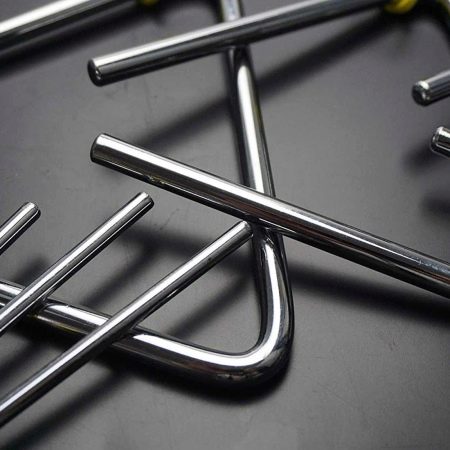
In Russia, the triangle "declared" itself around 1775. It quickly gained popularity and demand due to its color, which was quite exotic and reminiscent of the East.
One of the first operas in which one could hear the sound of the musical triangle was the opera by the French composer André Gretri, entitled "The Secret Magic", however, in orchestras with military musical compositions, it began to be used much earlier. It is known that the triangle was in demand among the troops during the reign of Empress Elizabeth Petrovna.
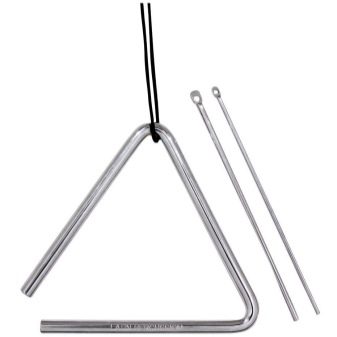
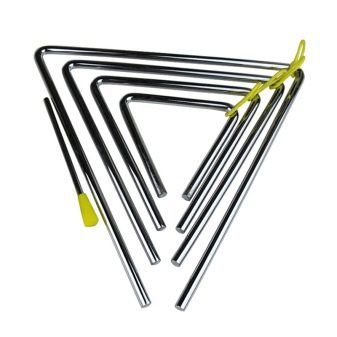
This instrument was also used by other famous musical classics, including the composer Joseph Hayden, Wolfgang Amadeus Mozart, as well as Ludwig van Beethoven, Johann Strauss and Nikolai Andreevich Rimsky-Korsakov. In their work, this instrument was most often used in order to create images associated with the East, as well as to enrich the palette of sounds of their musical compositions.
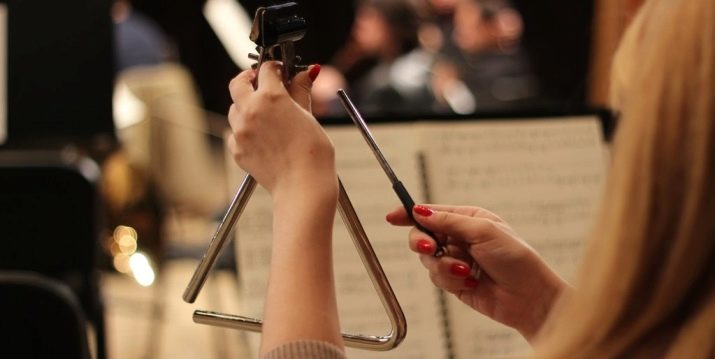
Of all the works where the musical triangle has its own part, the most famous is the first concert for piano and orchestra by Franz Liszt, which took place in 1849. As a joke, many began to call it the Concerto for the Triangle, because in this piece this instrument not only plays the role of a background, but is also fully responsible for one of the parts, thus opening the third movement of the concert entitled "Allegretto vivace".
At the present time, such an interesting musical instrument has not yet lost its significance in the field of music. It is difficult to imagine a modern orchestra without it, because it is he who revives its sound, gives it notes of solemnity and grandeur, and also makes it richer and more intense.
In addition, it is a multifunctional musical instrument that suits any musical genre, it fits harmoniously into almost any melody.
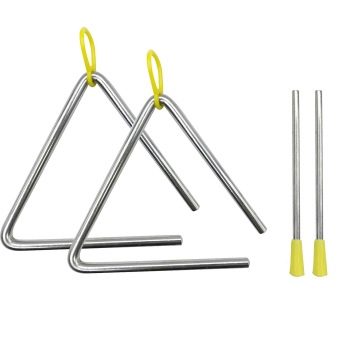
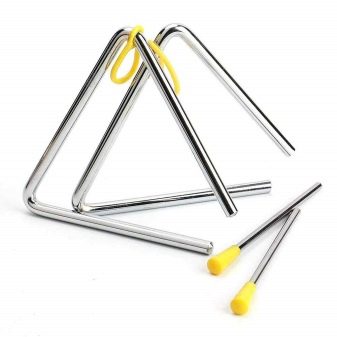
Nowadays, the triangle is very popular not only in orchestras, but also during festive times in Greece. It is used as an accompaniment during the New Year and Christmas period mainly by children during carols, congratulations and songs. The sound of this instrument creates the atmosphere and mood of a real holiday and reminds of a fairy tale.
How does it sound?
The triangle is a musical instrument that does not have a specific pitch. Notes for it are usually created with very different durations and without keys.
However, the timbre of this instrument is extraordinary. Its sound is sonorous, bright, clear and as if sparkling. In orchestras, it is he who has the greatest effect on the level of dynamics and creates a certain character in a piece of music.
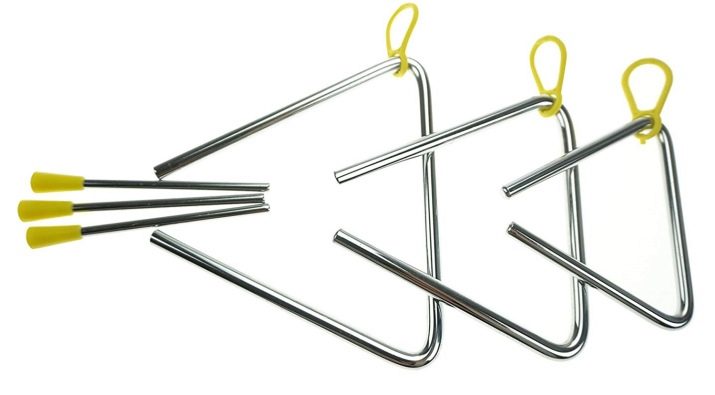
The sound of a triangle directly depends on how strong the blow will be on it. So, a gentle sound is obtained with an almost weightless impact. When sharper, the sound comes out literally harsh, brilliant and very colorful.
In addition, the sound is greatly influenced by what material he and his stick are made of, as well as what size it is.
How to play?
Playing the musical triangle requires special skill and a sense of sound and its rhythm.
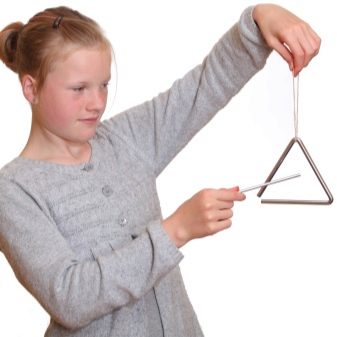
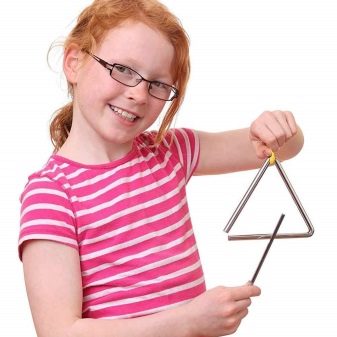
Usually, this instrument is suspended at one of its corners using a thin wire or braid, while it is held in the hands or attached to the pop-ture. Sound production occurs by striking with a stick, which is made of metal or wood and in the musical sphere is called nothing but a "nail".
Most often, in playing the triangle, musical techniques such as tremolo and glissando are used, as well as a number of certain relatively light rhythmic figurations.

Musical styles
The musical triangle has long and deservedly become a full-fledged orchestral instrument, which is the main one. There are many types of orchestras. These include string orchestra, military, brass, symphony, pop and jazz. Each of them has its own specific features in terms of sound and not only, but the musical triangle fits perfectly and harmoniously into each of them, adding variety and brightness to them.
